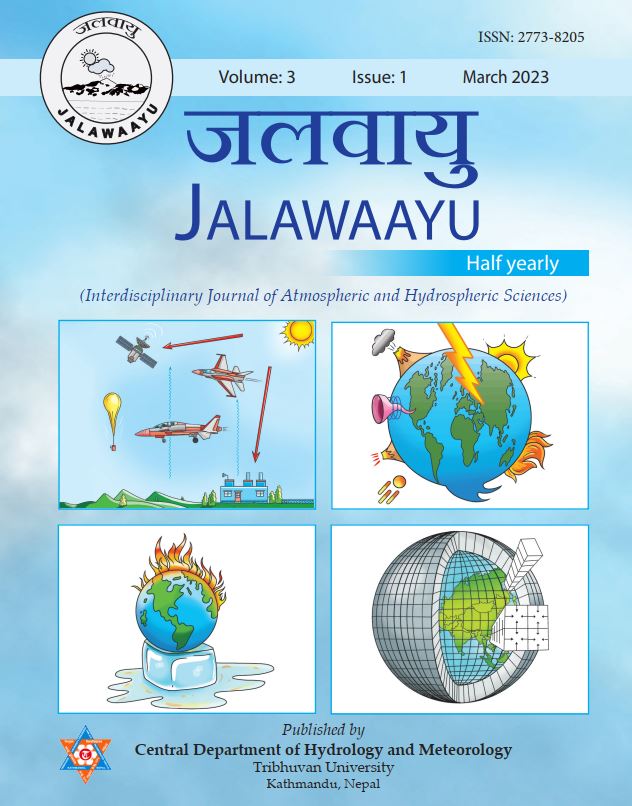Flood Susceptibility Analysis in West Rapti River Basin Using Frequency Ratio Model
DOI:
https://doi.org/10.3126/jalawaayu.v3i1.52053Keywords:
Flood, Susceptibility Analysis, Frequency Ratio Model, GIS, Climate changeAbstract
Floods are recognized as lethal natural events, which result in devastating natural and human losses. So, identifying flood susceptible zones is crucial to adopt necessary mitigation strategies beforehand. With the advent of GIS tools and modelling techniques, mapping of such zones has become easier and more precise; yet, flood prone countries like Nepal have not been able to embrace such tools for flood risk management. With a compelling need to address this situation, this paper employs Frequency Ratio model to analyze flood susceptibility in the West Rapti River Basin. The model, created with the help of 77 flood points and tested with 30 points to obtain 80.7% accuracy, maps the flood hazard zones in the area and identifies the lower Terai and settlement regions as high-risk areas. With the increasing threat of changing climate in the future, this study also propounds better preparation of flood inventory maps in the future for more precise susceptibility analysis models and better flood risk management.
Downloads
Downloads
Published
How to Cite
Issue
Section
License

This work is licensed under a Creative Commons Attribution 4.0 International License.
Copyright © of the articles is held by the authors.

